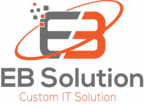Employee Monitoring Software: Balancing the Pros and Cons for Remote Workers
Remote work is here to stay. Since the start of the pandemic, it has become prevalent and widely accepted. Many businesses have shifted to remote or hybrid work models, and this trend is expected to continue.
- 16% of companies are completely remote
- 40% support hybrid office/remote working
- 44% don’t allow employees to work remotely
The benefits of remote work, such as increased flexibility, cost savings, and improved employee morale and productivity, have made it an attractive option for both employers and employees. However, remote work also has its drawbacks, including challenges related to cybersecurity, isolation, distractions, and difficulty in managing and monitoring employees.
But despite all these challenges, remote work is likely to remain a viable option for many organizations in the future. And with managers facing new challenges in monitoring employee productivity and engagement, many organizations have turned to employee monitoring software(EMS) to help them stay on top of their remote workforce.
What Is Employee Monitoring Software?
EMS can range from simple clock-in/clock-out systems to more invasive measures like taking frequent screenshots of an employee’s computer screen for example.
Tracking software like Hubstaff or BambooHR can monitor various activities on an employee’s computer. It can be: keyboard activity, mouse activity, visited websites, apps used, and even screen recordings. Some of the most invasive tools can even track an employee’s microphone and camera.
The information collected by the software is typically sent to the company in daily or weekly reports, allowing managers to monitor their remote workforce more closely. While this can be beneficial in preventing “productivity theft”, it could also damage morale and trust, and alienate good employees.
Employers must carefully consider the ethical implications of using monitoring software. Visible tracking can help build some trust between managers and employees, while hidden tracking can create a sense of suspicion and unease.
Ultimately, the decision to use monitoring software should be made with the understanding that it can have both positive and negative effects on workplace culture. Let’s look into its main pros and cons.
Pros of Employee Monitoring
Helps Managers Understand How Employees Spend Their Day
One key feature of many employee tracking tools is the ability to monitor and track how employees spend their time throughout the day. This information can be incredibly valuable for increasing productivity and identifying areas for improvement. EMS helps managers understand how employees prioritize their work and allocate their time.
For example, if a manager sees that an employee is spending too much time on non-essential tasks, they can work with the employee to re-organize their workload and focus on more important tasks.
In addition, tracking tools can help managers identify bottlenecks in workflows and identify opportunities for process improvement. By seeing how tasks are completed and how long they take, managers can identify areas of operations that can be improved by automating certain tasks or streamlining workflows.
Reduces Non-Work Activities During Working Hours
Many employers worry about remote workers wasting time on non-work-related activities. And they have a reason to worry, because according to a recent study, 53% of monitored employees spend 3+ hours per day on non-work activities, and half of them spend more time on non-work activities than work itself.
Tracking tools can help mitigate this issue. When employees know that they are being monitored, they are less likely to waste time on non-work-related activities.
In addition to reducing non-work activities, tracking tools can also help ensure that employees who are spending too much time working take appropriate breaks to avoid burnout. By monitoring employees’ activity levels, managers can ensure that they are taking breaks and stepping away from their screens regularly, which helps prevent burnout and improve overall productivity.
An Easy Way to Track Time for Remote Workers
For smaller companies that work with fully remote teams, employee tracking tools can be an easy and convenient way to track time and manage payments. Employees and freelancers can track their time using the app, and employers can set caps on hours worked and manage payments automatically. This can help streamline the payment process and reduce administrative overhead for small businesses.
Cons of Employee Monitoring
Hurts Employees’ Morale
While employee monitoring software can offer several benefits to organizations, it can also negatively impact employee morale. Employees may feel that their privacy is being invaded and that they’re being micromanaged.
Employee monitoring software often creates a culture of distrust in the workplace. When employees feel that they’re constantly being watched, they may feel that their employer doesn’t trust them to do their job properly. This can be demotivating and may cause employees to disengage from their work.
Another way that employee monitoring software can hurt employee morale is by creating a stressful work environment. Employees may feel like they’re under constant surveillance, which can lead to anxiety and stress. Instead of focusing on actual work, employees may start focusing on looking productive. “If I think about this problem too long, is the tracking going to give me a low productivity score?” or “What happens when I’m on the phone with a customer and not moving my mouse around? Will the tracking make it look like I’m not working?”
This can be especially hard on employees who are already struggling with mental health issues. If such employees feel like they’re not able to take a break or have some privacy, it can lead to severe burnout and eventual turnover.
“Activity Monitoring” Doesn’t Mean “Productivity Monitoring”
Another big issue with tracking tools is that they typically only measure superficial activity like mouse movements, keyboard strokes, and the apps being opened. This can be problematic for employees who work in jobs that require them to use their brain more than their keyboard.
For example, if an employee is trying to solve a complex workflow issue, they may need to spend more time thinking than typing. Similarly, if a salesperson is on the phone with a customer, they may not be actively using their keyboard or mouse. These scenarios can lead to inaccurate activity reports that suggest an employee is not working when they are actually being productive.
Inaccurate reports can have serious consequences for employee morale. Employees who feel that their work is not being accurately measured may feel that their contributions are undervalued or that they are being unfairly penalized.
Costs Organizations Good Employees
Employers implementing monitoring can alienate good employees. Almost half (47%) of surveyed tech employees stated they would refuse a job offer where EMS is a prerequisite.
When you relegate everyone to a number of keyboard strokes, you constrain creativity. And companies that fail to appreciate and foster creativity among their employees may find themselves struggling to retain their top talent. Employees who feel unappreciated and stagnant in their jobs are more likely to seek opportunities elsewhere, leaving the company with a shortage of skilled and experienced workers.
Finding a Balance
Finding a balance between tracking too much and too little can be a delicate process when implementing employee monitoring software. Employers want to ensure that their employees are being productive and efficient during working hours. But at the same time, employers do not want to create an environment that feels oppressive or infringes on their employees’ privacy.
To find a balance, it’s important to first establish clear goals and objectives for implementing the monitoring software. Ask yourself the following questions:
- What specific behaviors or activities are you trying to monitor, and why?
- How will this information be used?
- What do your employees think about monitoring?
- Are you trying to solve a problem that doesn’t exist?
Once you have established clear goals, it’s important to communicate with your employees about the monitoring software and why it is being implemented. Transparency can help alleviate concerns about privacy and create a culture of trust and accountability.
It’s also important to consider the frequency and type of data being collected. Collecting too much data can create an overwhelming amount of information while collecting too little can make it difficult to track productivity and identify areas for improvement. Finding the right balance may require some trial and error, as well as ongoing communication and feedback from employees.
Get Expert Advice on the Best Tools for Your Business
As a leading provider of IT services, EB Solution can help businesses implement employee monitoring software that suits their specific needs. Our team of experts has more than a decade of experience in this field and can help you select the right software and set it up in a way that maximizes its benefits.
Contact us now to schedule a consultation and learn how our IT services meet your unique business needs.



